As an Australian business owner or executive, you're likely facing an overwhelming surge of data that's straining your operations to the breaking point. With data volumes expected to grow by 23% annually through 2025 in Australia alone, according to Gartner reports, legacy systems like Microsoft Integration Services (SSIS) are increasingly inadequate. These outdated ETL (Extract, Transform, Load) processes, once reliable, now result in delays that can span hours or even days, hindering your ability to make timely decisions in a competitive market. Imagine your team bogged down by manual data handling, unable to respond swiftly to market shifts or customer needs, all while competitors harness cutting-edge tools for instant insights.
This isn't merely an inconvenience—it's a fundamental barrier to achieving your goals of increased operational efficiency, reduced costs, and higher revenues. In Australia's data-driven economy, where hyperscale cloud investments reached A$5 billion in 2024 and are projected to double by 2027, sticking with rigid, on-premises solutions like traditional SSIS means risking obsolescence. High operational costs from inefficient workflows, poor customer experiences due to delayed analytics, and the frustration of outdated legacy systems are common triggers prompting executives like you to seek change. Yet, the path forward can seem daunting amid concerns over high development costs and internal resistance.
At C9, Australia's Leading Custom Software, Apps, Integration & Database Developer, we recognise these challenges intimately. We specialise in crafting bespoke software, apps, integrations, and databases that address your unique pain points, transforming them into opportunities for growth. Our innovative, trustworthy, and collaborative approach ensures we're not just vendors but true partners in your journey to data mastery.
The Hidden Costs of Sticking with Outdated Integration
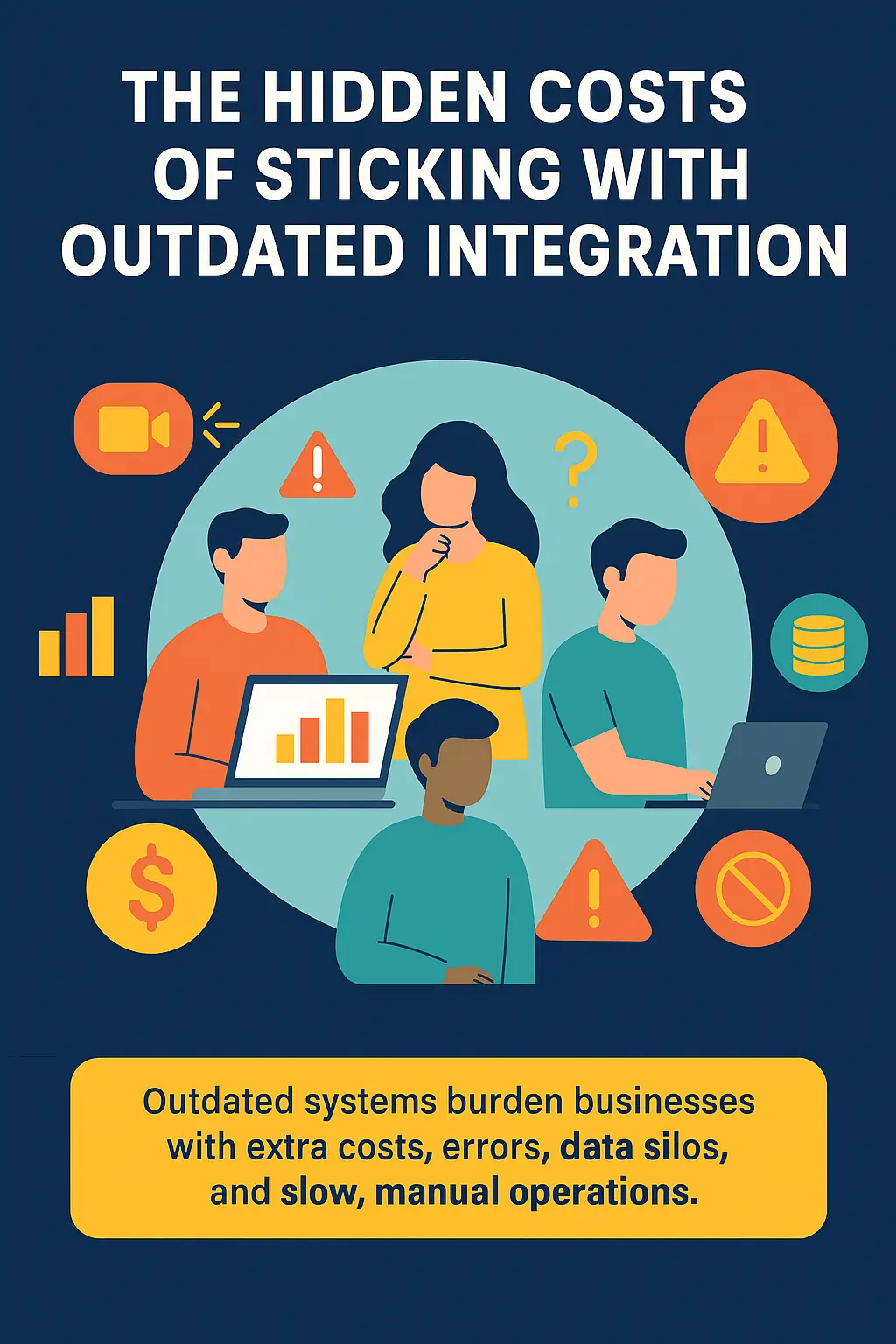
The repercussions of clinging to legacy Microsoft Integration Services extend far beyond surface-level frustrations. Consider the tangible impacts: manual ETL processes in SSIS often demand 25% more human intervention than modern alternatives, leading to inflated labour costs and error-prone operations. In Australian organisations, where IT spending on Microsoft ecosystems is set to surge in 2025, driven by AI and cloud adoption, these inefficiencies translate to millions in lost productivity annually.
Data silos—common in fragmented SSIS setups—exacerbate the issue, preventing seamless information flow across departments. This results in analytical bottlenecks, where executives struggle to access unified insights, ultimately compromising decision-making. For instance, a typical Australian retailer relying on SSIS might face annual inefficiencies costing upwards of A$100,000, as highlighted in real-world migration case studies. Add to this the security vulnerabilities of outdated systems, which fail to meet evolving compliance standards like those under the Australian Privacy Principles, and the risks multiply.
Moreover, the lack of real-time capabilities in traditional SSIS means you're operating on yesterday's data in today's fast-paced environment. With Australia's data analytics market projected to expand from A$74.83 billion in 2024 to A$94.86 billion in 2025, businesses ignoring these trends risk falling behind competitors who leverage AI for proactive strategies. The hidden toll includes missed growth targets, eroded customer trust from subpar experiences, and the constant battle against employee resistance to clunky tools that hinder productivity.
Why Inaction Spells Disaster
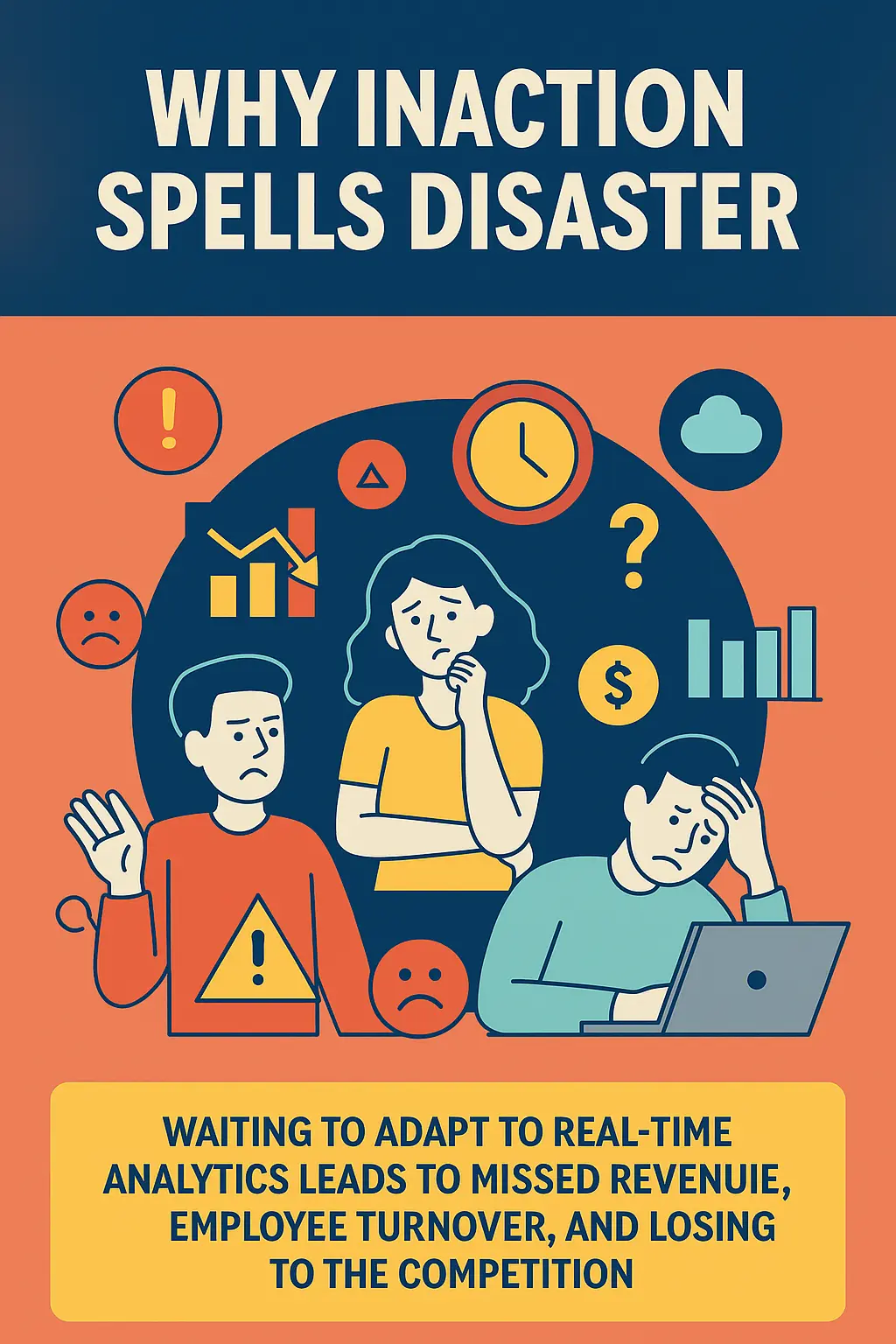
Now, let's intensify the spotlight on the consequences of delay. Envision your organisation missing a pivotal market opportunity because your SSIS-based ETL processes couldn't deliver real-time analytics—perhaps a sudden shift in consumer behaviour during a peak sales period, costing thousands in forgone revenue. Forum discussions on Reddit and social media buzz on X (formerly Twitter) are filled with Australian executives lamenting SSIS limitations: slow processing speeds, scalability issues, and the inability to integrate with emerging AI tools.
In 2025, with Gartner naming Microsoft a Leader in the Magic Quadrant for Integration Platform as a Service (iPaaS), inaction means watching rivals achieve 30% faster data processing through migrations to Microsoft Fabric. Australian trends underscore this urgency: AI is transforming industries, with over 1,000 documented success stories of Microsoft AI driving innovation, yet legacy systems like SSIS hold many back. High costs compound the problem—organisations report up to 40% overruns from patching SSIS inefficiencies, forcing painful decisions like budget cuts or stalled expansions.
Employee resistance only worsens the scenario; without modern tools, your driven, analytical team becomes disengaged, leading to higher turnover. In Australia's competitive landscape, where multi-cloud strategies and hyperautomation are rising trends, delaying migration equates to self-sabotage. The data analytics market's rapid growth signals that by 2025, 75% of enterprises will have shifted to cloud-based platforms—leaving laggards exposed to obsolescence and diminished profits.
Embrace AI-Driven Automation with Microsoft Fabric
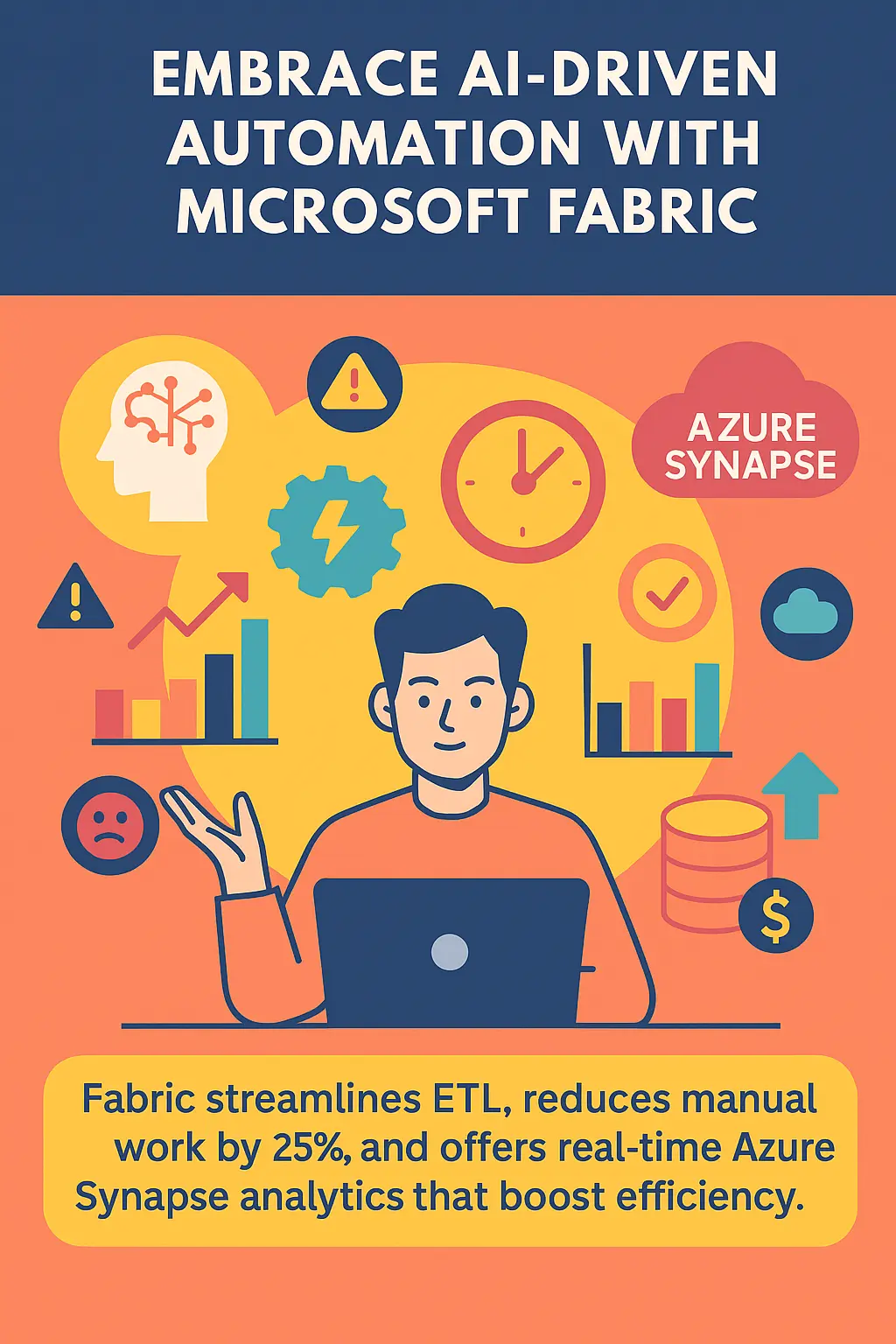
The antidote to these challenges lies in AI-driven automation and real-time data integration via Microsoft Fabric, a seamless evolution from Microsoft Integration Services. As Australia's premier custom developer, C9 excels in guiding organisations through this transition, delivering tailored solutions that enhance efficiency and profitability.
Microsoft Fabric integrates AI to automate ETL processes, with Azure Synapse providing real-time analytics and insights that process streaming data instantly. Key 2025 updates, such as the August Fabric Feature Summary's workflow enhancements and the new Copy job activity for pipelines, enable powerful orchestration with minimal effort. Migrations from SSIS to Fabric yield 30% faster processing and 25% less manual intervention, as evidenced by social media discussions and industry reports.
For Australian businesses, Fabric's Real-Time Intelligence offers event-driven solutions and AI-powered anomaly detection, ideal for sectors like retail and manufacturing. Direct ingestion via COPY INTO commands in Fabric Warehouse simplifies querying, while translytical task flows automate Power BI reports. Unified data lakes in OneLake eliminate silos, supporting hybrid setups that align with Australia's A$5 billion cloud infrastructure investments.
C9's collaborative expertise ensures secure, scalable implementations. We've helped clients realise 325% boosts in analytics access, mirroring cases like IFS's migration success. By integrating Fabric with your existing systems, we empower data-driven decisions that outpace competitors.
Beware the AI Cowboys: The Pitfalls of Cheap AI App Builders and Vibes Coding
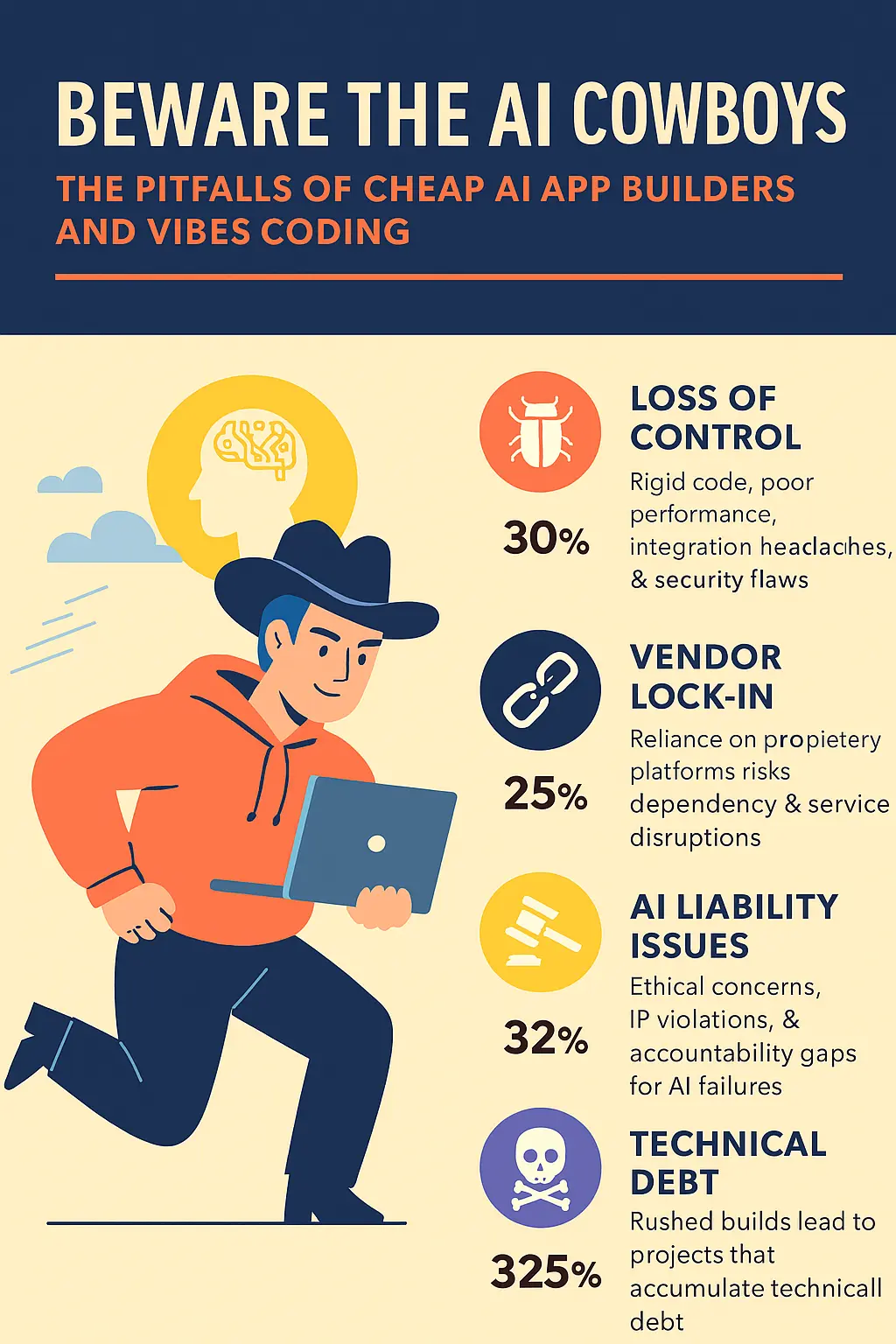
While embracing AI-driven tools like Microsoft Fabric promises transformative efficiency, it's crucial to navigate the landscape wisely. As an analytical Australian executive, you're detail-oriented and driven to maximise profitability, so let's educate you on the emerging risks of "AI Cowboys"—those rogue, unregulated app builders who leverage AI in a haphazard, cowboy-coding style—and the gray areas of "vibes coding." These approaches, often peddled by cheap AI app builders and freelancers, may seem like quick wins but harbour significant long-term problems that could undermine your operational goals.
First, what is an "AI Cowboy"? Drawing from established software development terminology, cowboy coding refers to autonomous, unstructured practices where developers (or in this case, AI-assisted builders) operate without defined processes, team collaboration, or rigorous standards. AI Cowboys amplify this by using generative AI tools to crank out code rapidly, often without consulting teams or adhering to best practices. They "gallop through code, leaving standards in the dust," as one industry analysis puts it, prioritising speed over sustainability. In 2025, with AI enabling even non-experts to build apps quickly, this has become a Wild West scenario where fly-by-night builders promise low-cost solutions but deliver technical debt.
"Vibes coding," a casual term evolving from low-code/no-code paradigms, describes intuitive, vibe-based development—relying on drag-and-drop platforms or AI prompts without deep technical rigour. It's appealing for its accessibility, but the gray areas are plentiful. Ethically, these methods raise concerns around bias in AI-generated code (trained on potentially skewed datasets), lack of transparency in how algorithms function, and accountability for errors—who's responsible when an AI-built app fails? Privacy issues loom large, as low-code platforms may mishandle sensitive data under Australian regulations, leading to breaches. Intellectual property gray zones emerge too, with AI tools potentially infringing on copyrights or producing derivative code without clear ownership.
Why do these cause problems later? The allure of cheap AI app builders—often freelancers charging a fraction of professional rates—lies in rapid deployment, but pitfalls abound. Limitations include reduced developer control, leading to low-quality, inflexible code that can't scale with your business growth. For instance, no-code apps suffer from subpar performance under high loads, integration constraints with existing systems like SSIS, and security vulnerabilities that expose your data to risks. Vendor lock-in is another trap; reliance on proprietary low-code platforms means you're tied to their ecosystem, with potential downtime if they falter. Real-world examples show projects failing due to poor planning and AI misuse, resulting in rushed estimates and unmaintainable code that accumulates "technical debt," costing up to 40% more in fixes down the line.
Freelancers using vibes coding exacerbate this by focusing on quick deliverables without long-term vision. They rarely provide documentation or structured handovers, leaving your team in the dark when issues arise. In contrast, at C9, we prioritise knowledge transfer—a process where we share expertise, skills, and insights throughout the project, ensuring your internal team gains the know-how to maintain and evolve solutions independently. This cumulative knowledge builds resilience, reduces dependency on external vendors, and fosters collaboration, breaking down silos for better decision-making. Unlike cheap options that vanish post-delivery, our approach includes mentoring, documentation, and pair-programming sessions, empowering your organisation for sustained efficiency and profitability. Think of it: While AI Cowboys might save upfront costs, the hidden expenses in rework and lost opportunities far outweigh them. C9's knowledge transfer turns your investment into a competitive advantage, aligning with your goals of reducing costs and gaining tech edges.
Why Discovery Calls Are Essential—and Skipping Them Is a Recipe for Failure
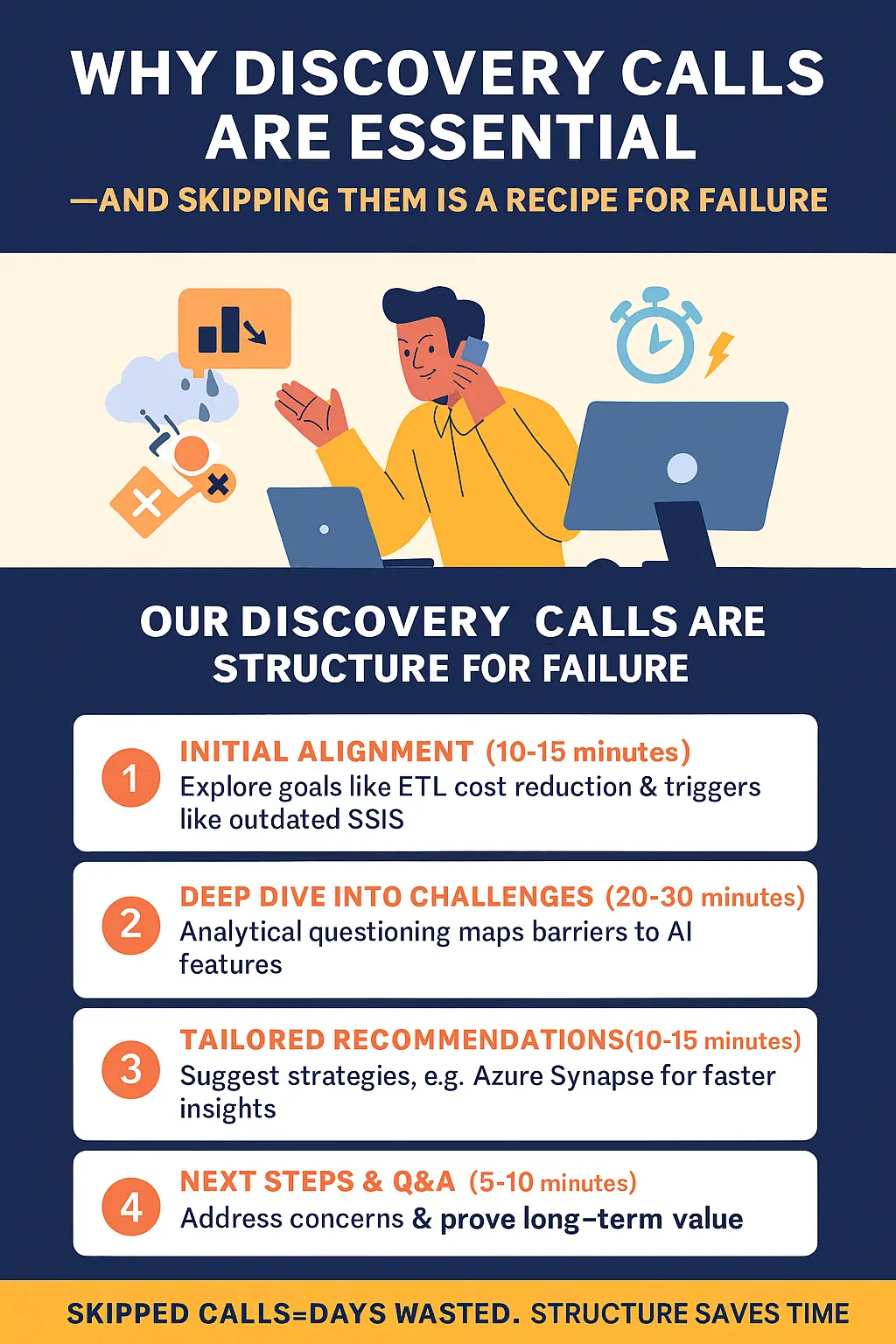
Transitioning to AI-driven solutions demands precision, making discovery calls indispensable. Skipping them is the worst decision you could make, as it invites mismatched integrations, budget overruns, and prolonged inefficiencies. Without a deep dive into your Microsoft Integration Services setup, solutions may fail to address specific pains like data silos or real-time gaps.
At C9, our discovery calls are structured for maximum value:
1. Initial Alignment (10-15 minutes): We explore your goals, such as reducing costs via ETL automation, and triggers like outdated SSIS systems.
2. Deep Dive into Challenges (20-30 minutes): Analytical questioning uncovers barriers, from vendor mistrust to employee resistance, mapping them to Fabric's AI features.
3. Tailored Recommendations (10-15 minutes): We propose high-level strategies, like migrating to Azure Synapse for 30% faster insights.
4. Next Steps and Q&A (5-10 minutes): Clarify concerns, demonstrating how this investment averts future revisions.
These calls aren't time-wasters; they're efficiency catalysts, saving weeks by preventing scope creep and building trust.
Navigating Pricing Pitfalls: Why Indicative Quotes Are Worthless and Discovery-Based Wins
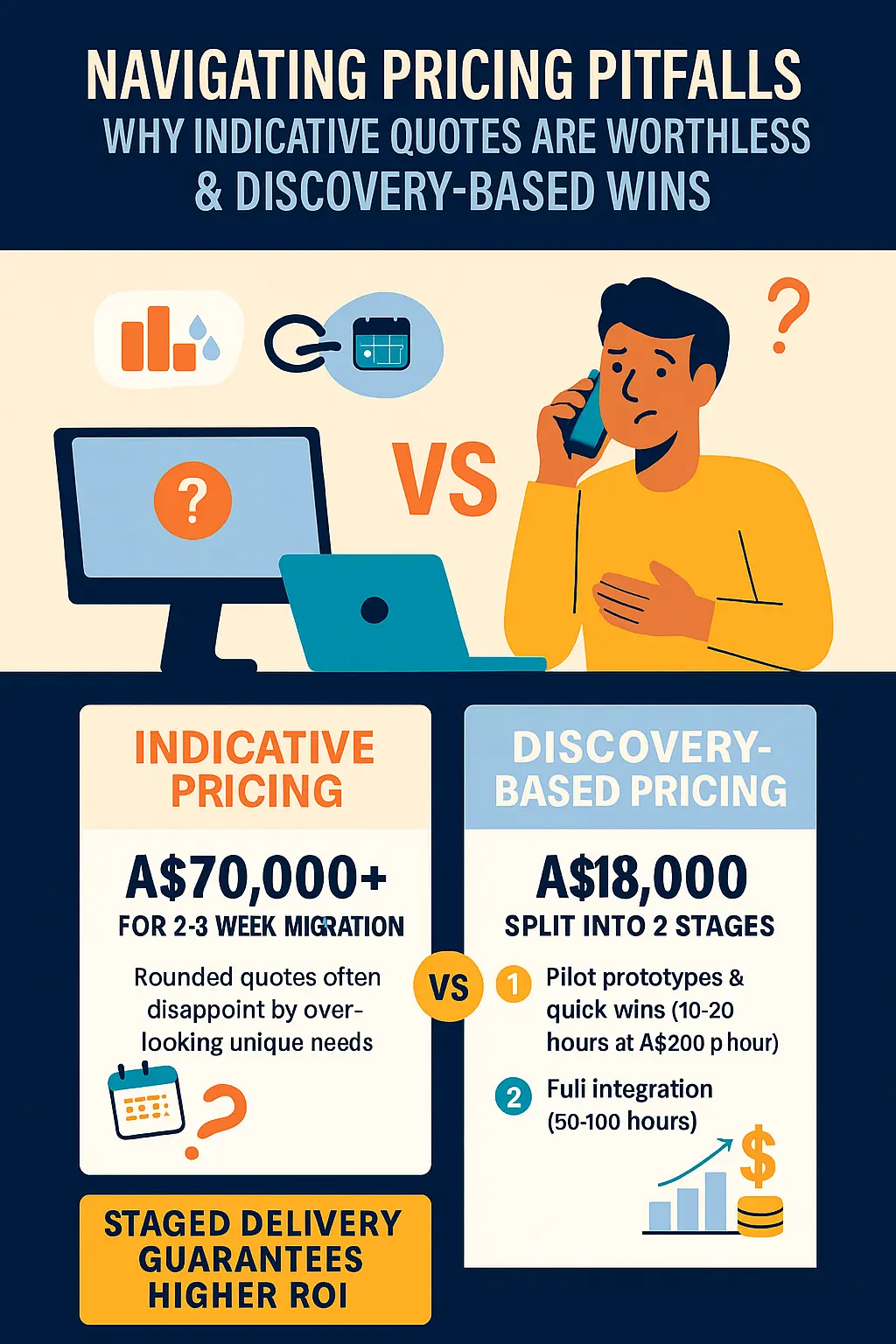
Pricing often deters executives, but indicative quotes—vague estimates without context—are pitfalls not worth pursuing. They ignore your unique SSIS migration needs, leading to surprises like hidden fees or underperformance in real-time analytics.
Indicative pricing rounds to the nearest day or week, e.g., A$50,000 for a "2-3 week" SSIS-to-Fabric shift, based on assumptions that rarely hold.
C9's discovery-based pricing is precise to the nearest hour, post-call. We stage projects for early ROI: Stage 1 (Discovery & Planning: 10-20 hours at A$200/hour = A$2,000-A$4,000) yields prototypes with quick wins like AI-automated ETL. Savings (e.g., 25% reduced effort) fund Stage 2 (Implementation: 50-100 hours = A$10,000-A$20,000), integrating Synapse.
Example: An Australian manufacturer with A$150,000 annual SSIS costs underwent discovery, staging a A$18,000 migration that delivered 30% faster processing, saving A$45,000 yearly—reinvested into AI enhancements. Without discovery, an indicative quote ballooned to A$70,000 due to mismatches.
Discovery-first ensures value, with staged delivery providing ROI from the outset.
Future-Proof Your Business Today
In 2025's AI-centric landscape, migrating from Microsoft Integration Services to Fabric's automation is essential for Australian efficiency. C9's solutions address pains, delivering profits and advantage.
Ready to revolutionise your data integration? Book a discovery call with C9 at https://www.c9.com.au/. Let's collaborate on trustworthy innovations—no obligations, just results.